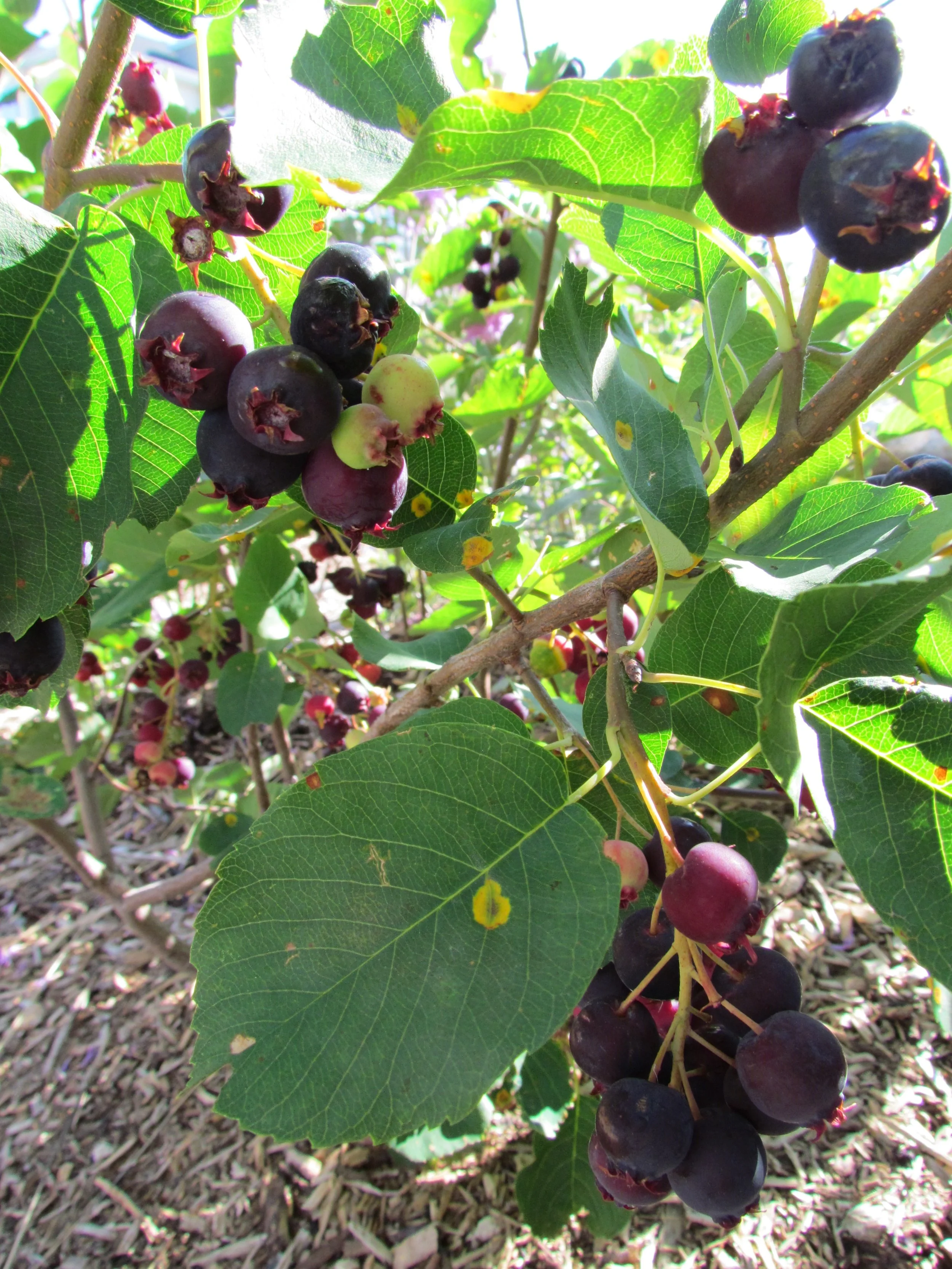According to Johnston, the saskatoon “was probably the most important vegetable food of the Blackfoot. The berries were used in great quantities in soups, stew, and meats, and were dried for winter use.”
Read MoreClusters of small white flowers in June create a mound of white in coulees and ravines where this vine climbs, spreading 3–6 metres over fences, shrubs and trees. In late summer and fall, clusters of feathery seed heads develop that hang on the vines into the winter.
Read MoreCommon along riverbanks and in moist meadows, the 1–3 m tall shrub often has bright red bark. In June it produces clusters of flat topped white flowers that mature into white berries 4–6 mm across.
Read MoreThis shrub or small tree reaches 1–5 m in height, and has many stout thorns, 2–7 cm long, along its branches. Clusters of white flowers in May mature into red or orange berry-like pomes about 1 cm across—like very small apples. The fruits, called haws, and the spines on the branches are combined in the common name—hawthorn
Read MoreIn late May and early June, the small yellow flowers of this grey-leaved, 1–4 m tall shrub, perfume the air with a fragrance reminiscent of jasmine. The wood, however, is not good for a campfire: when burned, it gives off an odour of human excrement.
Read MoreA small tree or shrub up to 6 m tall, the chokecherry is very common in ravines and open woodlands throughout the prairies. White flowers in a dense cylindrical raceme 5–15 cm long mature to astringent purple black fruit.
Read MoreOn south facing coulee slopes or river banks, this small shrub (1–2 meters high), has dense clusters of small yellow flowers at the end of its branches in May before any leaves appear. The flowers have a faint but unpleasant odour, hence the common name.
Read MoreThe common name of this 1–2 m tall shrub refers to the showy red-tipped yellow blossoms that smell strongly of cloves. Unlike other currants, the stems of the golden currant lack spines. The tart, juicy fruit ripens in July, and may vary from pale yellow to shades of red or black. It is often speckled with tiny yellow bristles.
Read MoreMost parts of the rose are edible—flower buds, petals, young leaves—but the hips are most nutritious. An analysis of the composition of rose hips revealed that 100 grams of hips contained 69,550 International Units of vitamin A (Johnston 42), and three hips can contain as much vitamin C as an orange.
Read MoreThis 30–75 cm tall shrub spreads by suckers to form a low thicket in moist areas. Two or three pale pink, bell-shaped flowers occur in small clusters at the end of stems and in the axils of the greyish green leaves. The waxy, white 6–10 mm berry-like fruit give this plant its common name.
Read More








